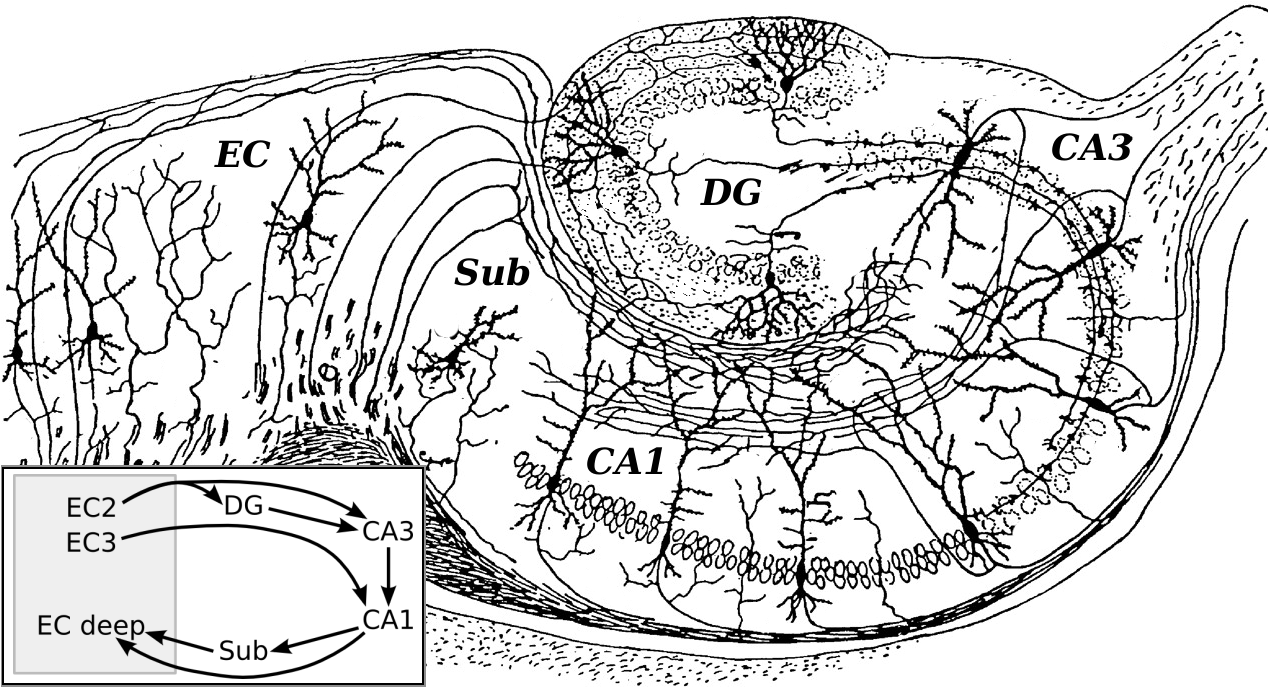How can memories prevail for long with sufficient specificity and accuracy? University of Bristol researchers recently published results[1] that contribute to understanding memory acuity and its resistance to interference. Following a new line of research on long-term modifications in the brain, termed synaptic plasticity, provided insight on stable memory formation in the hippocampus. Professor Jack R. Mellor experimented alongside four colleagues by electrophysiologically measuring output of nerve cell types they theorized are vital in remembering particular surroundings. Results also reveal underlying mechanisms to memory-based prediction and expectation of forthcoming events.
Synaptic plasticity examines how the brain alters itself to develop, adapt to the environment, learn and create memories. This process depends on changes in neuronal activity to either enhance or attenuate information being processed and integrated. Memories in particular form when signals are strengthened. Properties that induce change include how often neurons ‘talk’- meaning the frequency of action potentials (APs)- the duration of these electrical signals, and which neurons are connected to communicate via synapses. Interneurons serve as regulatory intermediators between the talking neurons. In the study at hand, researchers investigated parvalbumin (PV) and somatostatin (SST) interneurons for their roles in inhibiting synapses when generating, then storing memories in the hippocampus. While amplified signals, called excitatory connections, are known to partake in memory formation, this experiment brings light to strengthened inhibitory synapses’ involvement.
The aforementioned hippocampus is a seahorse shaped, ear-level brain region largely involved in learning and memory. CA1 pyramidal neurons of the hippocampus act as place cells. As the name suggests, place cells encode information about spatial surroundings. PV and SST interneurons target these pyramidal neurons’ dendrites- the neurite structure receiving incoming APs- to affect their excitation-induced output. Research reveals that the two interneurons “stabilise place cells while facilitating representation of multiple unique environments within the hippocampal network.” Strengthened inhibitory synapses can thus downregulate excitatory connections to prevent memories from getting tangled up. Remember the attributes neurons possess to bring about synaptic plasticity? PV and SST utilise those short-term changes, such as alteration of AP frequency and timing of AP firing, to regulate place cells.

Source: https://en.wikipedia.org/wiki/Hippocampus Image from Wikipedia as drawn by Cajal DG showing the location of the aforementioned CA1 pyramidal neurons in the hippocampus
So, CA1 pyramidal neurons encode a collection of place cells when learning or remembering different environments. However, this CA1 peculiarity then causes issues in creating stable versus flexible representations of the environment. According to some schools of thought, synaptic plasticity sometimes compromises stability of the original spatial memory in order to learn about new locations encoded by the same place cells. A mechanism is needed to counteract the destabilisation of prior memories. “We show that inhibitory plasticity may provide that mechanism,” shares Professor Mellor.
[1] Udakis, Matt et al. “Interneuron-specific plasticity at parvalbumin and somatostatin inhibitory synapses onto CA1 pyramidal neurons shapes hippocampal output.” Nature communications vol. 11,1 4395. 2 Sep. 2020. https://pubmed.ncbi.nlm.nih.gov/32879322/.

